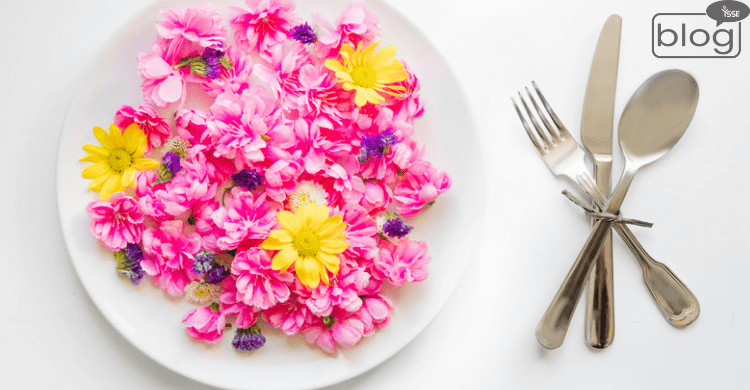A Journey into the World of Edible Flowers
As we wander through gardens and meadows, we often encounter a mesmerizing array of flowers, each with its own unique beauty and fragrance. But did you know that some of these exquisite blooms are not only meant for admiring, but also for savoring? Yes, you heard it right – Edible flowers are a delightful and colorful addition to culinary creations. Let’s embark on a journey to discover the enchanting world of edible flowers and explore some of the most captivating varieties.
Embracing Nature’s Delicacies:
Roses:
Roses are a wonderful addition to culinary ventures as well as a symbol of love and romance. These fragrant blooms are available in a range of hues and tastes, from mildly peppery to sweet. Rose petals can be used to sweets to give them a refined touch or used to infuse syrups and produce flower teas.
Lavender:
With its soothing aroma and delicate purple hue, lavender is a popular choice for both culinary and aromatic purposes. The flowers of this herb lend a floral and slightly sweet flavor to dishes, making them an excellent addition to baked goods, syrups, and even savory dishes.
Calendula:
Known for its vibrant orange and yellow petals, calendula flowers have a slightly peppery and tangy flavor. These cheerful blooms can be used to add a pop of color to salads, soups, and rice dishes. Calendula petals can also be dried and used to brew a fragrant and uplifting herbal tea.
Hibiscus:
Hibiscus flowers are often used in many different cuisines and are renowned for their enormous, elaborate blossoms. Their abundance of polysaccharides and anthocyanins can help maintain normal cholesterol and blood pressure levels.
Dandelions:
Dandelions have small blossoms and are rich in beta carotene and polyphenols, which are antioxidants that help protect against cell damage and reduce inflammation. The greens are also high in lutein, a neuroprotective compound that improves eye health.
Nasturtium:
Nasturtium flowers come in a range of warm and inviting colors, from fiery reds to sunny yellows. These blossoms boast a peppery and slightly spicy flavor, making them a perfect addition to salads, garnishes, and even sandwiches. Nasturtium flowers are not only visually appealing but also add a delightful zing to dishes.
Pansies:
Pansies are known for their wide range of hues and their soft, velvety petals. With their subtle, almost grassy flavor, these pretty blooms go well with both savory and sweet recipes. In addition to being an exquisite garnish for salads and appetizers, pansies can be used to embellish cakes and other delicacies.
Violets:
With their delicate, deep-purple petals, violets are a sight to behold in the garden. These dainty flowers have a subtly sweet and floral flavor, perfect for infusing into syrups, making floral jams, or crystallizing as decorative accents for desserts.
Edible flowers offer a delightful way to incorporate nature’s beauty into our culinary creations. From roses to violets, each variety brings its own unique characteristics and flavors to the table. So, the next time you take a stroll through a garden, consider the possibility of bringing a touch of floral elegance to your next culinary masterpiece with these enchanting blooms.
For more such blogs click here.
Writer :
Jarin Anan Tanha
Intern,
Content writing department,
YSSE.

